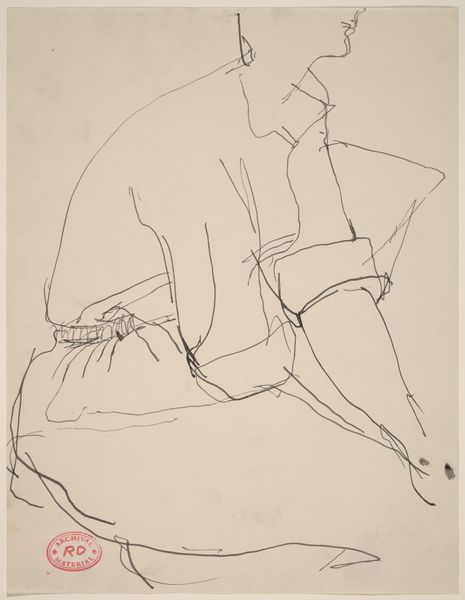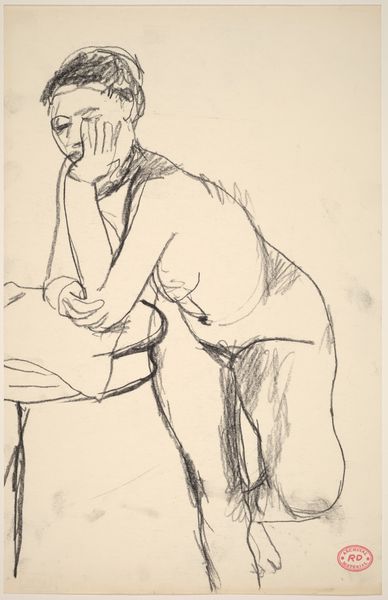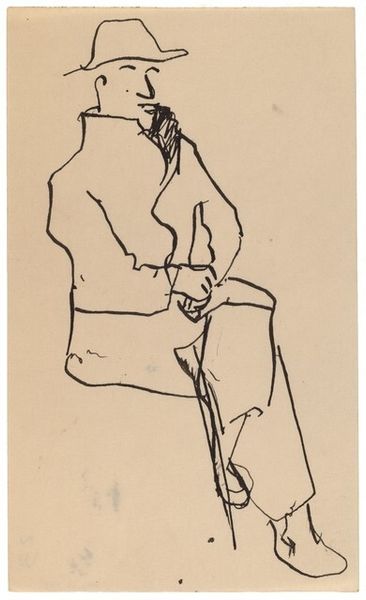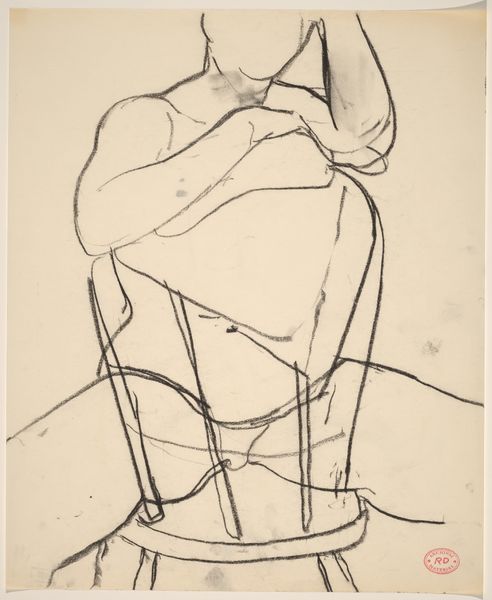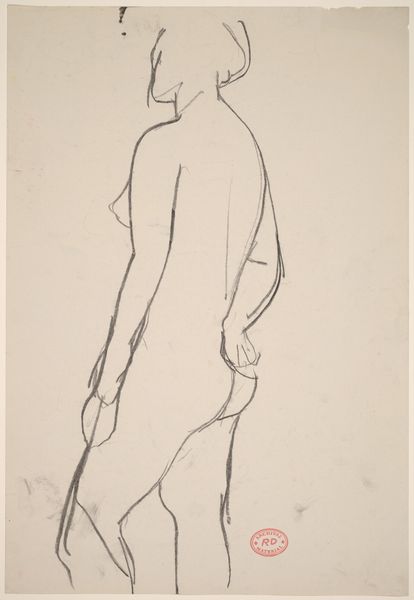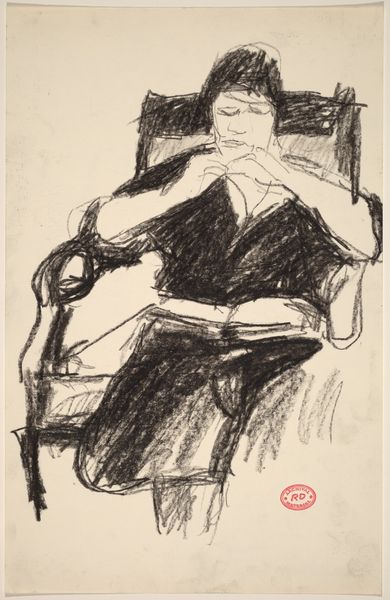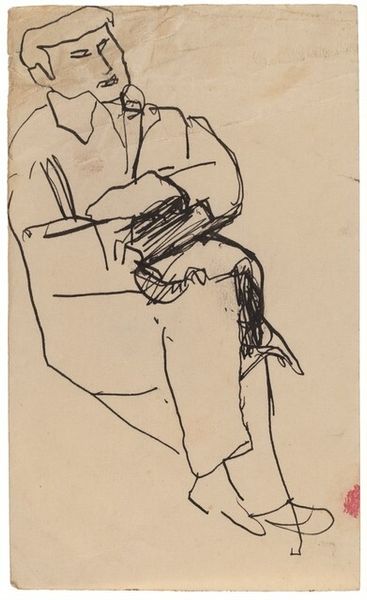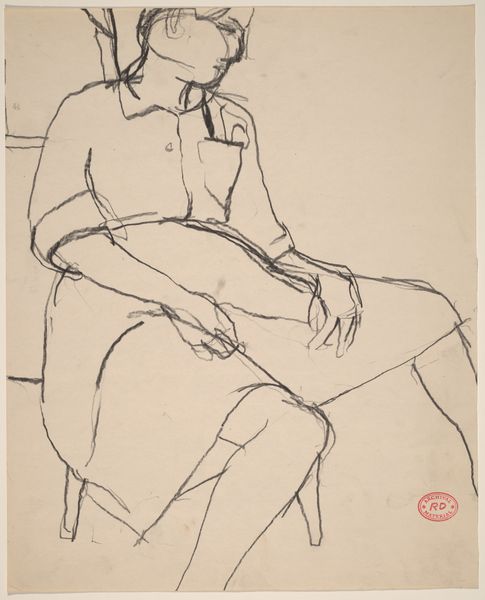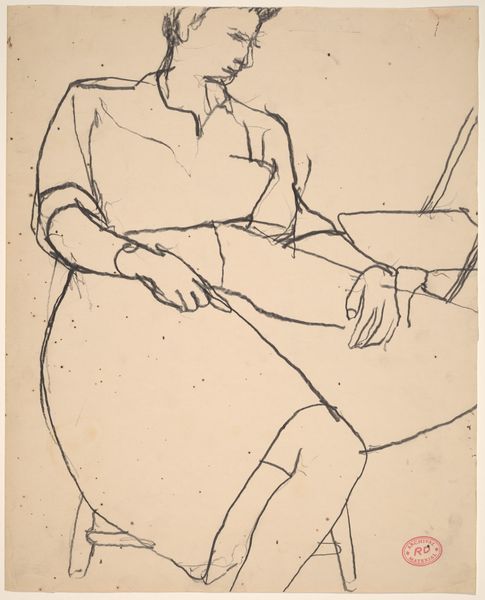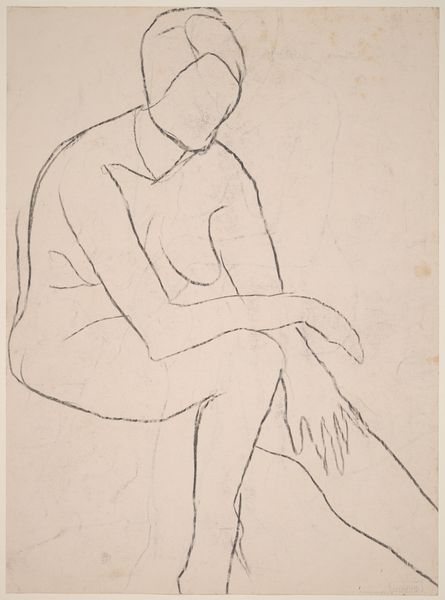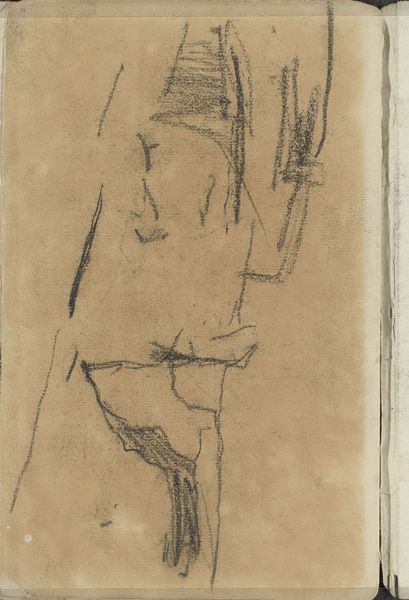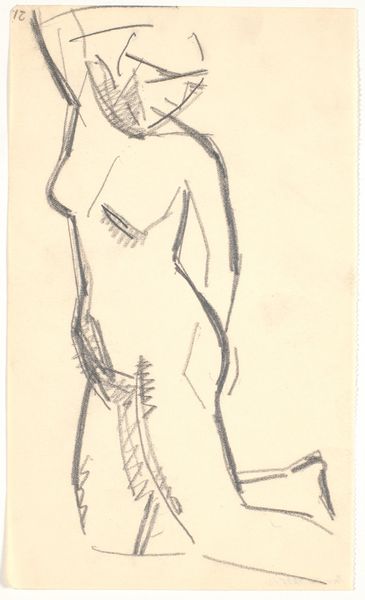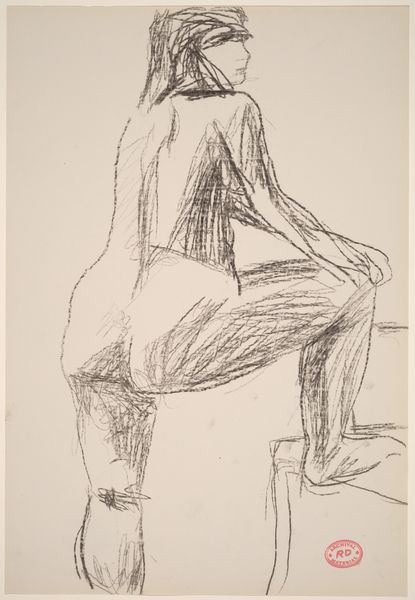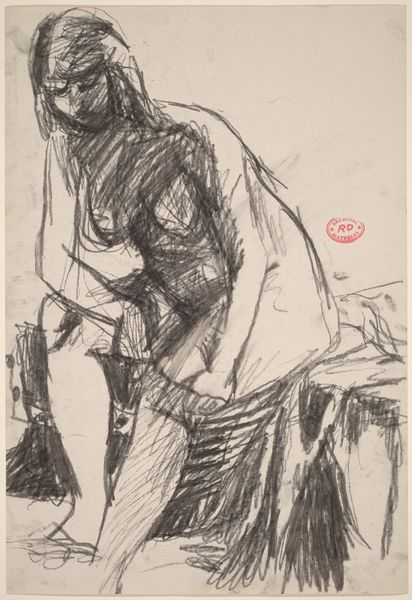![Untitled [seated woman] by Richard Diebenkorn](/_next/image?url=https%3A%2F%2Fd2w8kbdekdi1gv.cloudfront.net%2FeyJidWNrZXQiOiAiYXJ0ZXJhLWltYWdlcy1idWNrZXQiLCAia2V5IjogImFydHdvcmtzLzAzYzFjMmU1LWFiMGYtNDEwMS05OGZjLWE2OWUyZjEzZGQyMi8wM2MxYzJlNS1hYjBmLTQxMDEtOThmYy1hNjllMmYxM2RkMjJfZnVsbC5qcGciLCAiZWRpdHMiOiB7InJlc2l6ZSI6IHsid2lkdGgiOiAxOTIwLCAiaGVpZ2h0IjogMTkyMCwgImZpdCI6ICJpbnNpZGUifX19&w=3840&q=75)
drawing, charcoal
#
portrait
#
drawing
#
figuration
#
bay-area-figurative-movement
#
portrait drawing
#
charcoal
Dimensions: sheet: 37.8 x 30.5 cm (14 7/8 x 12 in.)
Copyright: National Gallery of Art: CC0 1.0
Editor: This charcoal drawing, titled "Untitled [seated woman]," was created by Richard Diebenkorn sometime between 1955 and 1967. It's fascinating how the simple lines capture such a complex pose, but I’m curious about what's *behind* the sketch. What stories or social contexts do you see emerging from this work? Curator: Well, viewing it through a historical lens, Diebenkorn made this drawing during a particularly turbulent time in American society. Think of the Cold War anxieties, the burgeoning Civil Rights movement... this portrait, with its stark lines and somewhat detached feel, it arguably mirrors a certain existential questioning that permeated the art world. Notice how the figure avoids direct eye contact; it almost refuses to engage directly. Editor: That makes sense, it's a very internal gaze, a sort of private moment. Was there anything specific about art institutions and patronage at the time that might have influenced this piece? Curator: Absolutely. Mid-century American art experienced a tension between state-sponsored promotion of abstract expressionism, as a symbol of freedom of expression, and artists like Diebenkorn, who were exploring a return to figuration. He navigates abstraction and representation simultaneously. The very act of depicting the figure—however subtly questioning—was a statement. It can be considered to represent a certain form of defiance. Think about whose gaze is normalized and celebrated and whose bodies occupy a similar space in the narrative, then reflect upon this individual's setting. Editor: So, by choosing to depict a figure, he was subtly pushing back against the dominant artistic and, perhaps, social narrative? It highlights the intersection between the figure and a broader dialogue regarding representation. Curator: Precisely. Art serves both as a reflection of its context, and frequently—simultaneously—as a conscious deviation from and a critical reaction to these dominant elements, to create discourse and promote action. Editor: That's a fascinating perspective. I initially saw a simple portrait, but now I understand how it is a conversation about societal and artistic expectations. Curator: Exactly! I hope our talk encourages listeners to ask who holds the power to portray and to define whom or what art history considers to be worthy of portrayal, going beyond just what is apparent within the strokes.
Comments
No comments
Be the first to comment and join the conversation on the ultimate creative platform.
